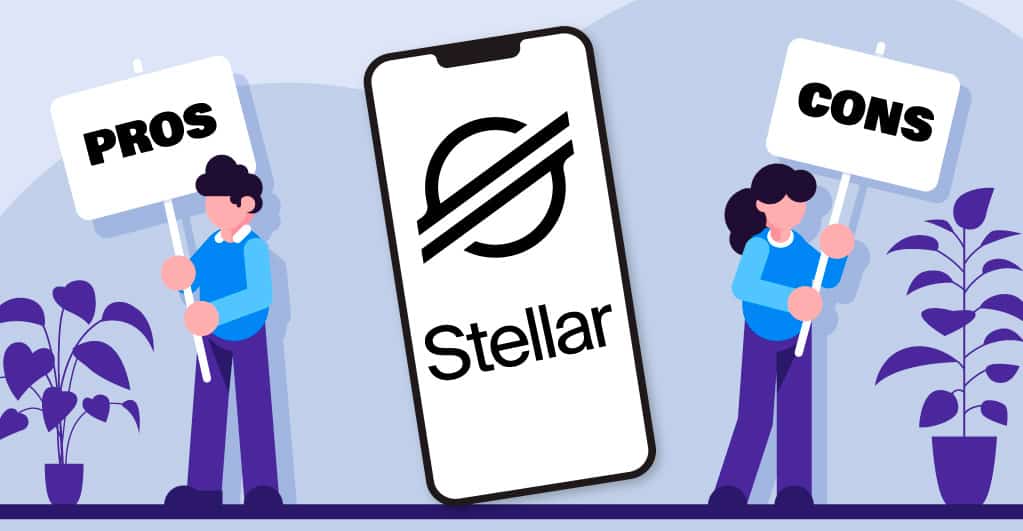
Stellar Lumens – Pros and Cons
Stellar Lumens is a leading digital currency project developed by the Stellar Development Foundation, which offers services similar to Ripple. The Stellar cryptocurrency token is called Lumen that trades under the symbol XLM. Stellar helps to create, send, or trade digital representations of all forms of money, be it dollars, bitcoin, pesos, or others. The traders can utilize the token (Stellar) on the Stellar network, a blockchain-based distributed ledger network connecting people, banks, and payments systems, to facilitate low-cost and cross-asset transfers of value. In other words, the cryptocurrency is designed to connect all the global financial systems on a single network.
The Stellar network is a decentralized peer-to-peer network, which helps to send money and convert currencies. The network allows one type of currency to be sent from a peer, which arrives as a different currency at the receiver’s end. During this journey from the sender to the receiver, the stellar network facilitates several currency transitions, provided the straight currency pair swap is available. In case the currency pair swap is not available, and there is a demand for the initial currency from a Lumens holder, the network searches for a pair of Lumens as the destination currency. Thus, even if a commonly traded pair is not available, the Stellar network ensures an easy transition between various currencies. Anchors facilitate the exchange of currencies within the network by holding a deposit and issuing the credit in a different currency. Due to the presence of all anchors on the same network, the currency transition process is incredibly fast.
Like every other cryptocurrency, Stellar Lumens also has some pros and cons:
Pros
- Stellar processes over 2000 transactions per second, which takes about 5 seconds to validate each transaction. This speed ensures quick cross-border payments.
- The low transaction time and high operational efficacy of Stellar Lumens keep the transaction fees well within the limit.
- As all the XLM tokens were created at inception, Stellar does not use Proof of Stake or Proof of Work, and therefore the rewards for maintaining the Stellar network easily come from inflation. This inflation mechanism makes the Stellar price prediction easier.
- The Stellar network enables easy execution of multi-currency transactions that sets it apart from other leading digital currencies. The network also has an innate ability to store orders as in a decentralized exchange. The stored orders ultimately become the network’s order book. The network then matches buyers with sellers along with matching multiple trading pairs.
- Stellar can incorporate tech elements like blockchain smart contracts and enhanced features like multi-signature to enhance the potential of the payment systems. These elements help the network to partner with big names like IBM, which significantly increases the company’s credibility.
Cons
- Stellar payment protocol faces a great deal of competition in the cryptocurrency industry, especially from Ripple and Ethereum. The primary reason for this rivalry is that Stellar offers similar services as Ripple and Ethereum. Moreover, as the number of traditional banking institutions, which are trying to diversify into better cross-border payments, is increasing, the competition with Stellar is skyrocketing.
- Sometimes, the mandatory minimum balance of 20 XLM coins in the trader’s wallet poses a problem for the users who do not want to invest much in XLM.
Overall, Stellar Lumens were invented to eliminate the problems existing in cross-border transactions like high fees and lengthy transaction times. Lumens seek to provide a quick and inexpensive solution to dispel these limitations and thus help in sending money across the world. The Stellar team aims at disrupting traditional banking systems and payment networks. In its vision, Stellar will be allowing ordinary coders and developers to include robust currency exchange and trading systems into their websites and applications. Thus, people worldwide having a basic hardware setup and an active internet will have access to the financial systems.

